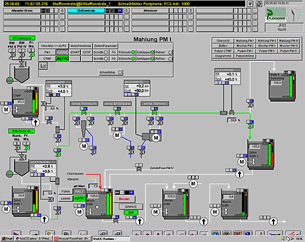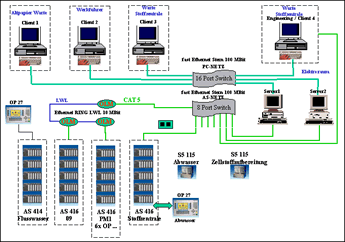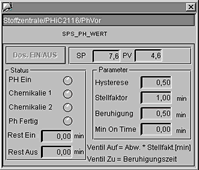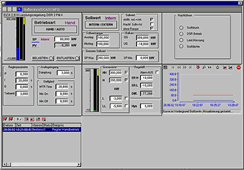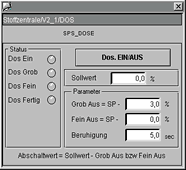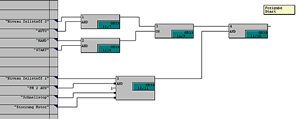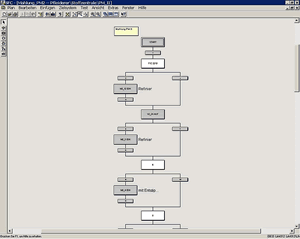Upgrading TELEPERM M to PCS7
at Pfleiderer Spezialpapiere
To meet the high demands on the quality of their papers while producing at reasonable costs, the paper factory Pfleiderer in Teisnach has always relied on innovative automation solutions. To modernize and enlarge the existing stock preparation plant, they needed a reliable partner with profound experience in planning, designing, and realizing projects of plant automation.
Over many years, Schlemmer Prozess Systeme (SPS) from Deggendorf has proven a guarantor for forward-looking process measuring and control technology and automation solutions in many industries. Projects carried out at home and abroad (e.g. plants in Indonesia and Thailand) reflect a high degree of professional know-how.
Feeling at home in the fields of glass manufacture, brewing industry, chemistry, and mechanical engineering, SPS found new challenge in the automation of paper manufacturing plants.It was obvious for the Pfleiderer company to cooperate with the specialist, which is located only 20 km away, because Schlemmer Prozess Systeme met all requirements needed for the job.
Sustainable and open automation system
Designing a general automation solution, which is open for integration of further plant components, was a key demand. In order to provide cost-saving spare parts stocking and fast and intuitive training of personnel on the new plant components, hardware as well as operator prompting have been standardized. Therefore, we chose the Siemens PCS7 process control system. To create a basis for a future automation solution, a client/server solution was preferred. Based on the MS Windows operating system, the system merges latest programming interfaces with the well-known Windows operating standard. In contrast to TELEPERM M, a remarkably higher screen resolution and many new visual functions are provided for plant visualization. Now, it is no longer necessary to display interrelated plant components on different process windows. The visual and operating system is made up of commercial and reasonable PC hardware. The components of the SIMATIC S7-300 and S7-400 series are responsible for automation tasks.
Commissioning without downtime
It was absolutely important to avoid down times, because the stock preparation plant is the heart of the paper manufacture. Therefore, all input signals were directed parallel to the new and the old system, which enabled signal testing and essential analog value adjustments in advance and during operation. In a second step, on a production-free Sunday, plant components were removed step by step from the TELEPERM M, integrated into the PCS7 system and tested.
Special modules for dosage, pH calibration and refiner controlling
According to the PCS7-specific faceplate technology, special function modules and user interfaces were developed for dosage of the single substances, pH calibration and refiner controlling. In faceplate technology, automation functions and user interface form a unity. Once developed, standards only have to be assigned. For example, a motor module and its corresponding user interface only have to be developed and tested once, but can be integrated into the program for every motor. Any change in the “root motor module” can, if desired, immediately affect all modules within the program.
The faceplates for motors, controls and analog value displays contain all plant-relevant data. For example, test-point-relevant alarms and analog value diagrams are displayed. Alarm limits can be adjusted for selective plant supervision. The shutdown of valves and motors is indicated in plain text along with the current status.
Software development with modern programming interfaces
The automation software is mainly created in CFC (continuous function chart) and SFC (sequential function chart). CFC is the tool for the graphic design of the continuous automation functions. Therefore, prefabricated modules are placed on the CFC layout, parameterized and interconnected. Moreover, like other PCS7 software components, CFC offers extensive testing and commissioning functions.
SFC is used for the graphic layout of discontinuous batch processes and facilitates easy editing of sequencers. The desired CFC module interfaces are selected by simple actions (like “drag & drop” and “fill in the blanks”) and interconnected with the sequencer transitions. The user is also supported by potent test and IBS functions as well as convenient editing functions. The graphic sequencer layout can be transferred to the user interface and serves the plant operator as a tool for analysis.
Essential changeover from TELEPERM M plants to SIMATIC PCS7
Our customer, the Pfleiderer Special Paper Mill, has recognized the importance of overall process automation for quality assurance as well as for productivity. This results in an advantage against competing companies in the market. Moreover, Pfleiderer has recognized that the TELEPERM M process control system has become outdated and, since spare parts have become rare, means an imminent threat to production plant availability.
With PCS7, Siemens offers the perfect tool to cope with all tasks to come up – even in the future. We recommend PCS7 as the best choice for long-term quality assurance and production advance.
“Made in Germany” has to evolve again to a quality label in industry; “Made by Pfleiderer Special Paper” already gained already such a label among professionals.
With plants set up at home and abroad, SPS Schlemmer Prozess Systeme GmbH has proven a competent partner when it comes to solutions with SIMATIC products. A team of highly motivated coworkers is ready for planning whole plants.

